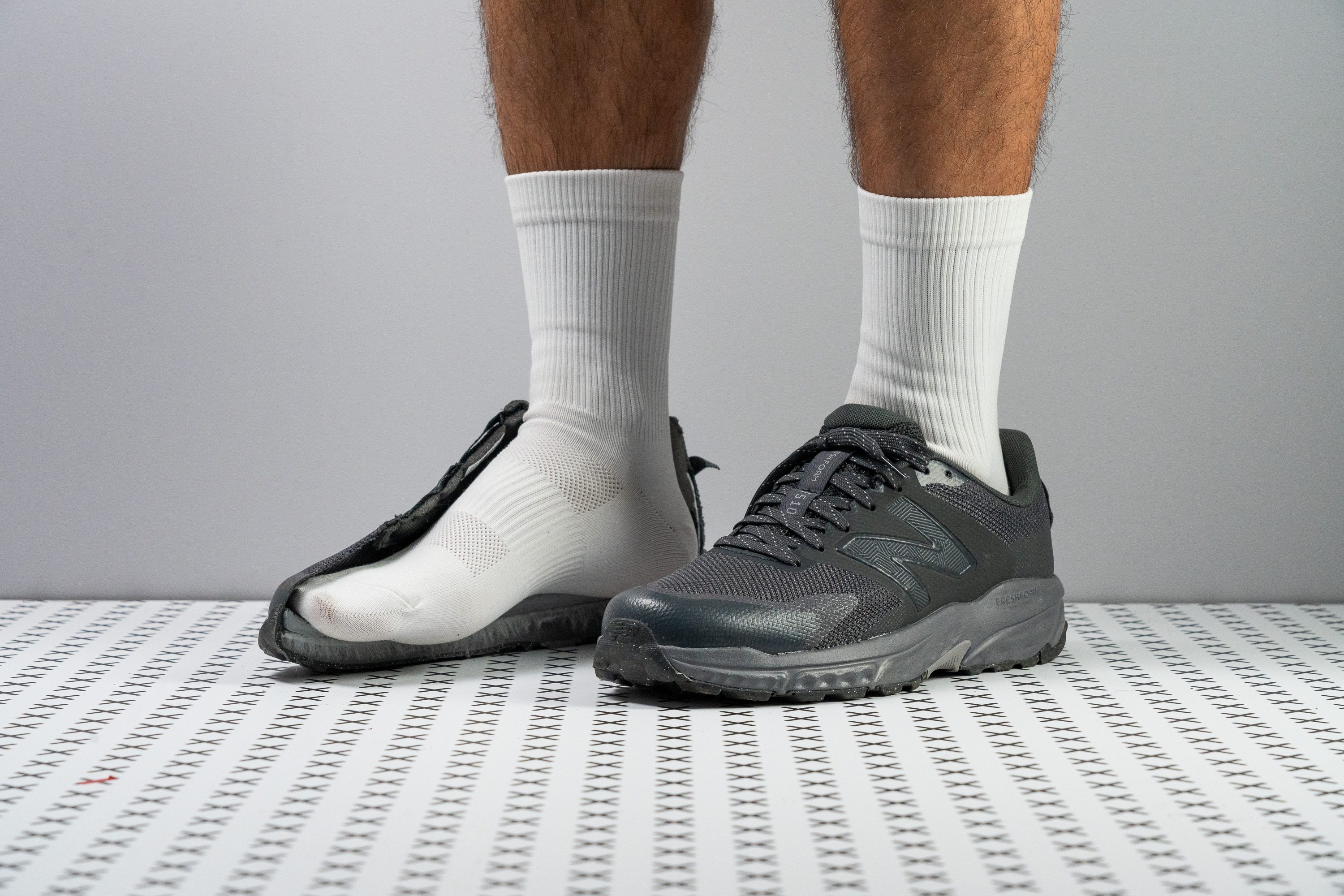Our verdict
Pros
- Works well as a road-to-trail shoe
- Easy on the wallet
- Great for trail novices
- Good impact protection
- Well-padded and cushy upper
- Solid traction on and off-road
- Breathable and protective toebox
- Strong arch-support
Cons
- Not for technical trails
- No rock plate
- Midsole feels rather dull
Audience verdict
Comparison
The most similar running shoes compared
+ + Add a shoe | |||||
|---|---|---|---|---|---|
| Audience score | 74 Bad! | 76 Decent! | 88 Great! | 86 Good! | |
| Price | £100 | £100 | £140 | £140 | |
| Trail terrain | Light | Light | Light | LightModerate | |
| Arch support | Neutral | Neutral | Neutral | Neutral | |
| Weight lab Weight brand | 11 oz / 312g 11.5 oz / 326g | 10.7 oz / 302g 9.9 oz / 282g | 10.3 oz / 292g 10.9 oz / 309g | 10.1 oz / 286g 9.2 oz / 260g | |
| Drop lab Drop brand | 8.2 mm | 8.0 mm 8.0 mm | 6.0 mm 5.0 mm | 7.2 mm 6.0 mm | |
| Strike pattern | HeelMid/forefoot | HeelMid/forefoot | Mid/forefoot | Mid/forefoot | |
| Size | True to size | Half size small | True to size | True to size | |
| Midsole softness | Balanced | Balanced | Balanced | Soft | |
| Difference in midsole softness in cold | Small | Normal | Small | Big | |
| Toebox durability | Decent | Good | Decent | Bad | |
| Heel padding durability | Bad | Decent | Bad | - | |
| Outsole durability | Good | Decent | Good | - | |
| Breathability | Moderate | Breathable | Warm | Moderate | |
| Width / fit | Narrow | Medium | Narrow | Narrow | |
| Toebox width | Medium | Wide | Medium | Narrow | |
| Stiffness | Stiff | Stiff | Moderate | Moderate | |
| Torsional rigidity | Moderate | Moderate | Stiff | Flexible | |
| Heel counter stiffness | Moderate | Moderate | Moderate | Moderate | |
| Lug depth | 2.9 mm | 2.4 mm | 3.1 mm | 2.8 mm | |
| Heel stack lab Heel stack brand | 33.8 mm | 32.2 mm 32.0 mm | 31.7 mm 29.0 mm | 30.6 mm 32.0 mm | |
| Forefoot lab Forefoot brand | 25.6 mm | 24.2 mm 24.0 mm | 25.7 mm 24.0 mm | 23.4 mm 26.0 mm | |
| Widths available | NormalWideX-Wide | NormalWide | NarrowNormal | Normal | |
| Season | All seasons | SummerAll seasons | All seasons | All seasons | |
| Removable insole | ✓ | ✓ | ✓ | ✗ | |
| Orthotic friendly | ✓ | ✓ | ✓ | ✗ | |
| Ranking | #356 Bottom 3% | #340 Bottom 8% | #130 Top 36% | #176 Top 48% | |
| Popularity | #319 Bottom 13% | #179 Top 49% | #216 Bottom 41% | #182 Top 50% |
Who should buy
We recommend the NB 510 v6 as a great choice for:
- Trail running novices who want a reliable and versatile shoe that can take them from door to trail
- Neutral runners looking for a generously padded and well-cushioned trainer for daily runs
- Those in the market for a budget-friendly all-rounder that can also serve as a light hiker/walking shoe
- Runners in warmer climates in need of a shoe with a breathable upper
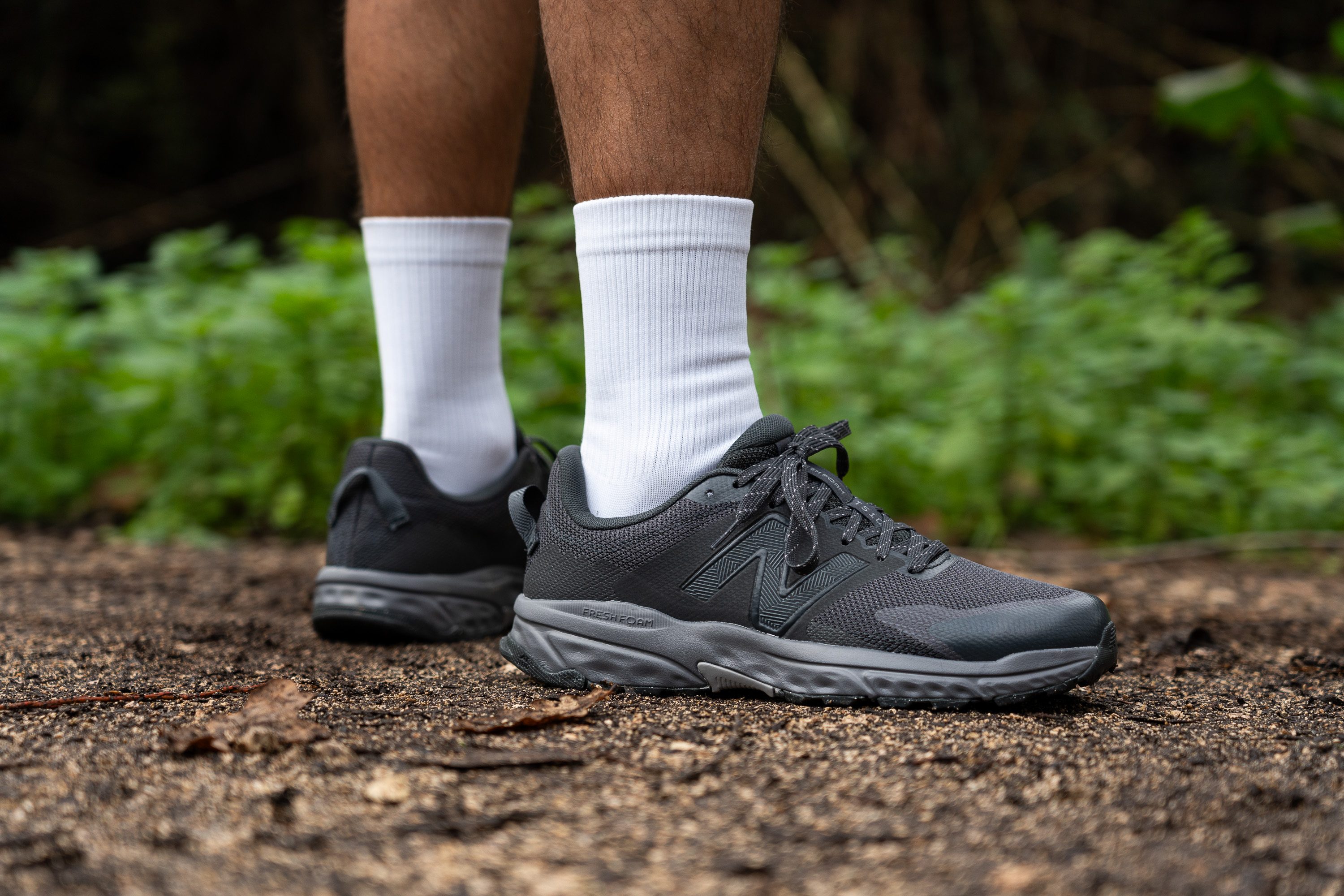
Who should NOT buy
There's a small 3D moulded midsert in the arch of the 510 v6 that somewhat serves as a rock plate, though runners who frequent rocky trails will need a more protective shoe like the Merrel Nova 3 instead.
As a road-to-trail shoe, we found that the 510 v6's lugs aren't well-suited for more challenging and technical terrains. We recommend checking out the Saucony Peregrine 13 with its more aggressive, talon-like lugs that adhere to almost any surface.

While its performance in our freezer tests implies good wintertime performance, the airy upper mesh will lead to frostbitten toes in more extreme conditions. We recommend that runners in frostier climates check out a warmer alternative like the Salomon Speedcross 6.
Cushioning
Heel stack
We measured the 510 v6's heel stack to be 33.8 mm thick, putting it on par with our current lab average.
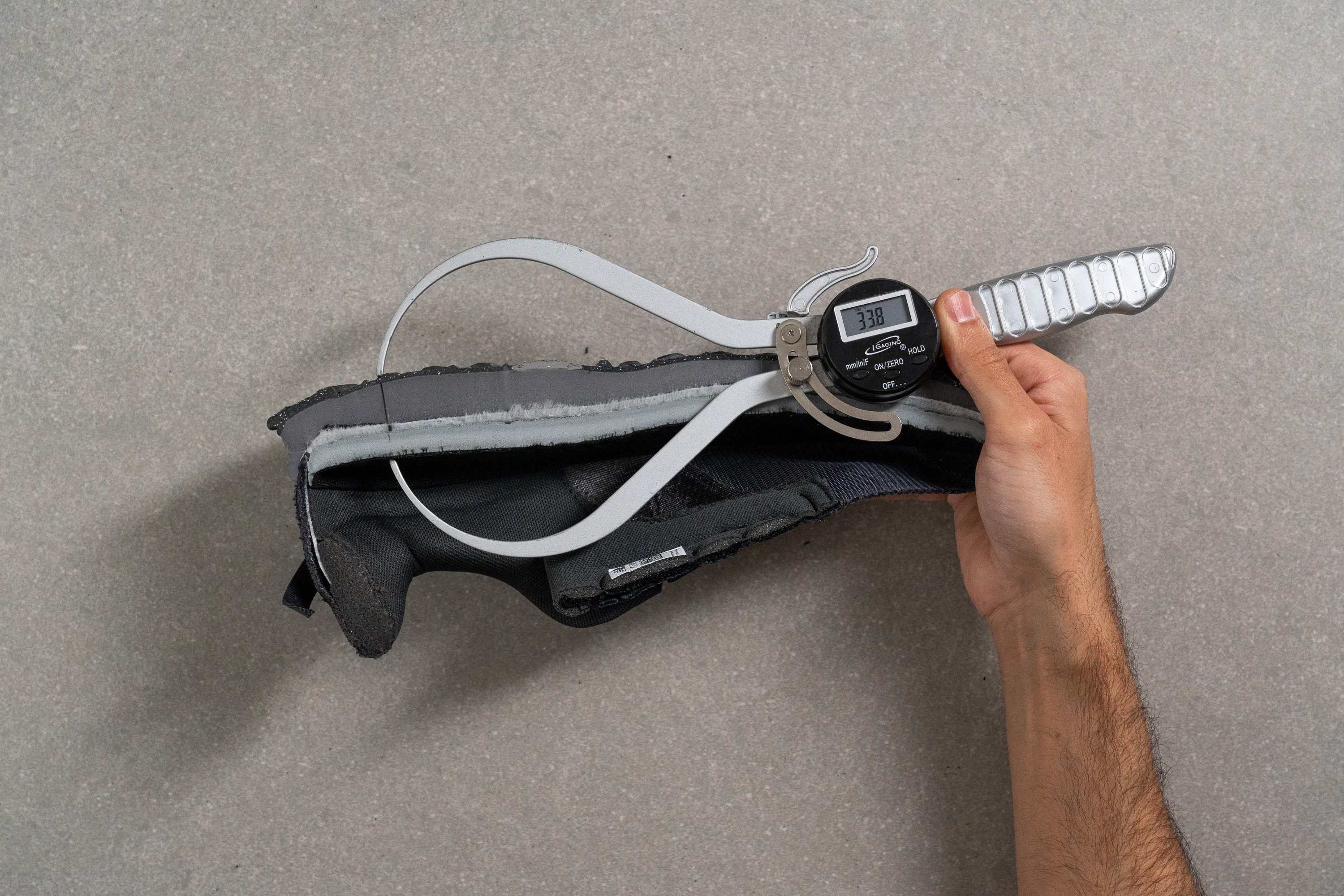
This is a good amount of protective foam underfoot for well-cushioned heel landings while testing this shoe.
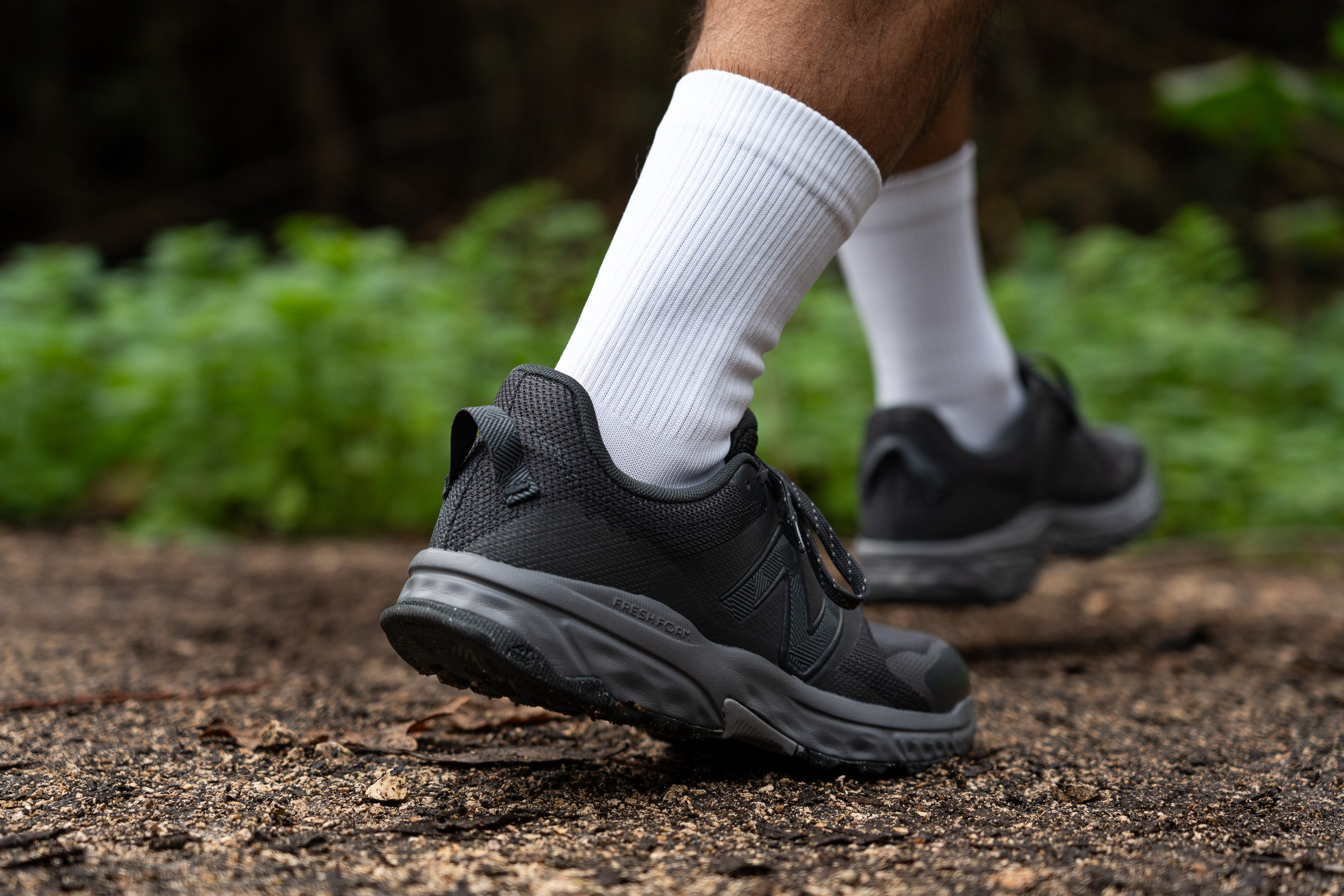
| 510 v6 | 33.8 mm |
| Average | 32.6 mm |
Forefoot stack
The forefoot stack is also within the average range for trail shoes at 25.6 mm thick according to our calliper.

Having such a stack in the forefoot does a good job of muting out the harsh impact of the ground below whether we were testing the shoe on or off trail.

| 510 v6 | 25.6 mm |
| Average | 25.1 mm |
Drop
The difference in our stack measurements leaves the 510 v6 with a heel drop of 8.2 mm. This offset is quite versatile as it will suit the strike pattern of most runners, whether heel, midfoot, or forefoot strikers.
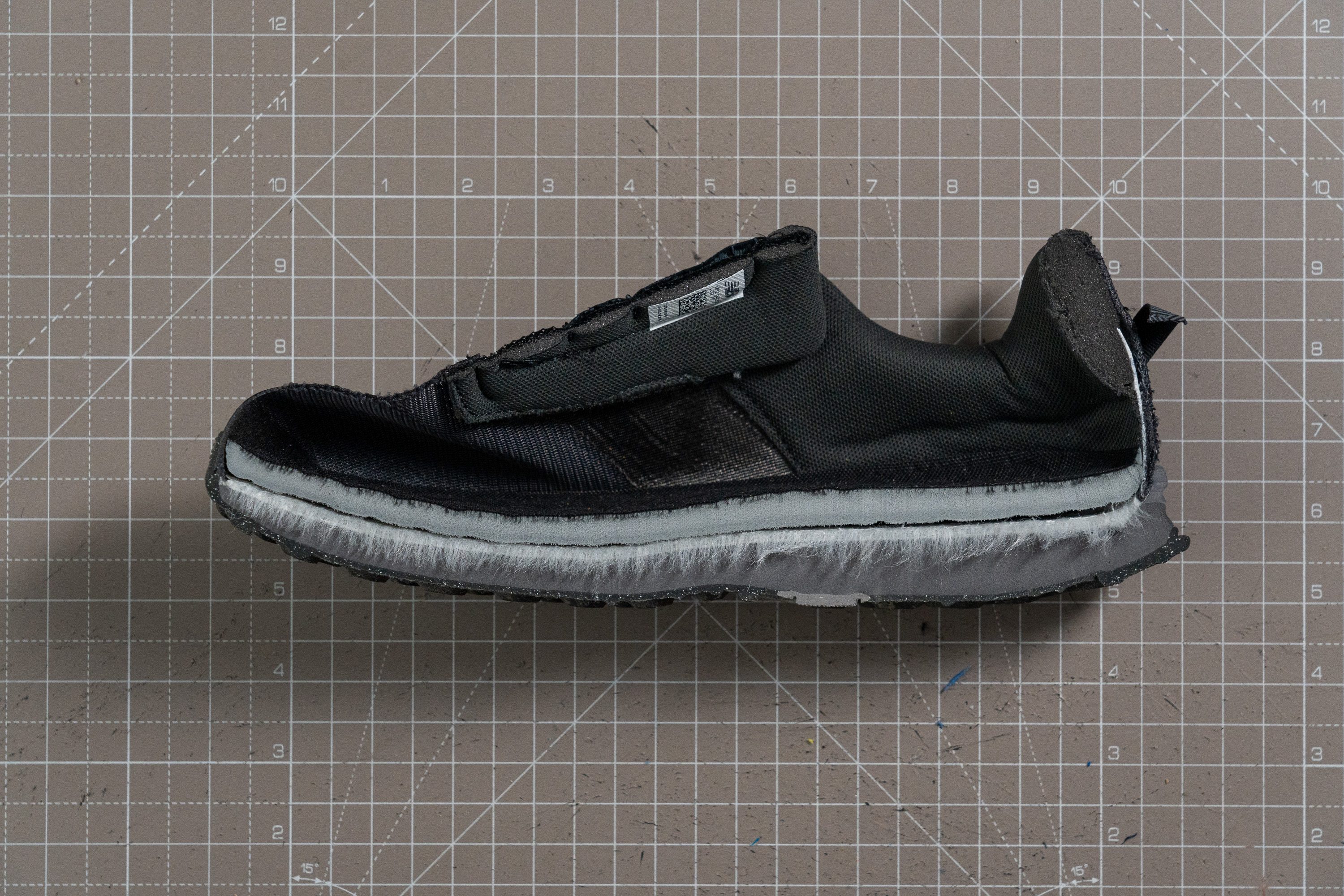
| 510 v6 | 8.2 mm |
| Average | 7.6 mm |
Midsole softness
The 510 v6 is perfect for heavy runners and those who prefer a midsole that isn't too soft and squishy underfoot. Pressing our durometer against the midsole foam yields a reading of 26.5 HA which feels balanced, if somewhat firm, underfoot during testing. This also contributes to the shoe's stable ride and makes it a good walking shoe/hiker.
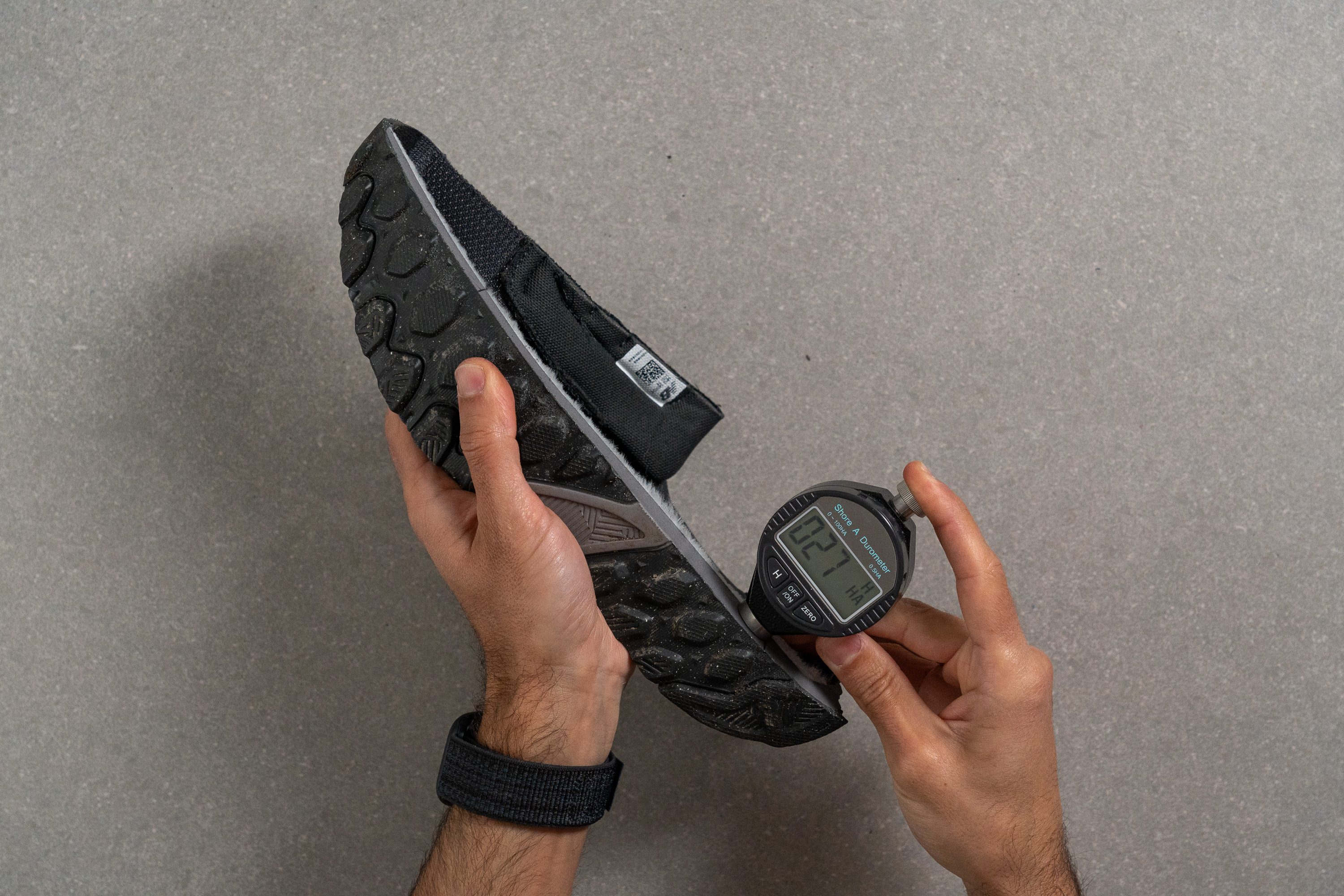
The foam also has a decent rebound as we toe off, though we wouldn't go as far as to call it energetic. This wasn't an issue for our easier runs of short to moderate distances, though we did find ourselves wanting a little more pop whenever we stuck in for a long-haul effort. We recommend the Salomon Ultra Glide 2 as a more responsive alternative for going the distance more efficiently.
| 510 v6 | 26.5 HA |
| Average | 21.9 HA |
Size and fit
Size
New Balance 510 v6 fits true to size (57 votes).
Width / Fit
The 510 v6's toebox is decidedly narrow at only 95.6 mm wide at its widest point. That said, runners with broad feet who need a little extra internal real estate can opt for the wide or extra-wide versions of the shoe.
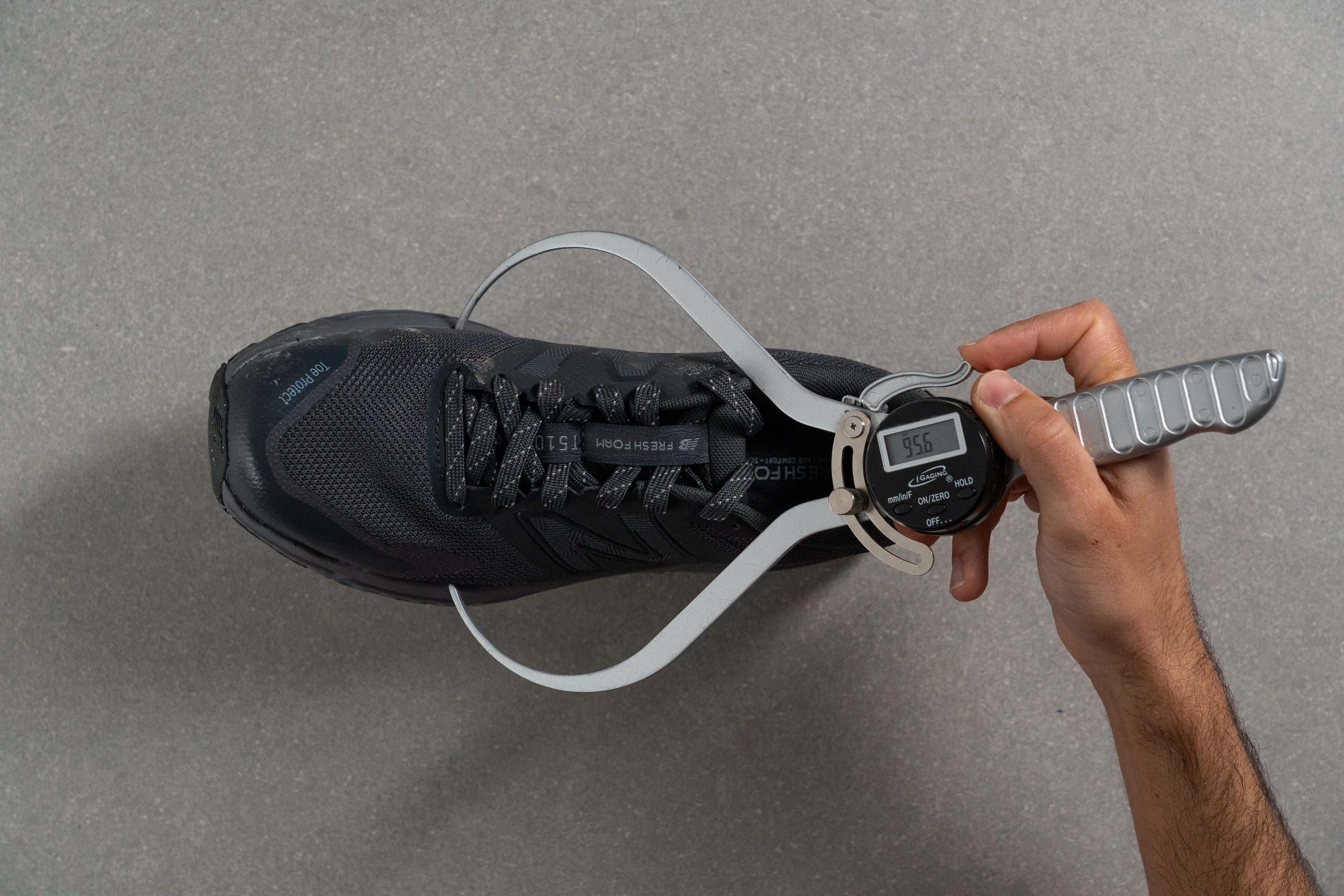
This test follows an older methodology, which is why you don't see recently tested shoes in the chart. Results from different methodologies can not be compared.
| 510 v6 | 95.6 mm |
| Average | 98.9 mm |
Toebox width
At only 75 mm wide according to our caliper, the toebox is also narrower than average around the big toe. This means that the 510 v6 tapers to about the same degree as the average trail shoe and means that runners with narrow feet should have enough room to splay out comfortably within the shoe.
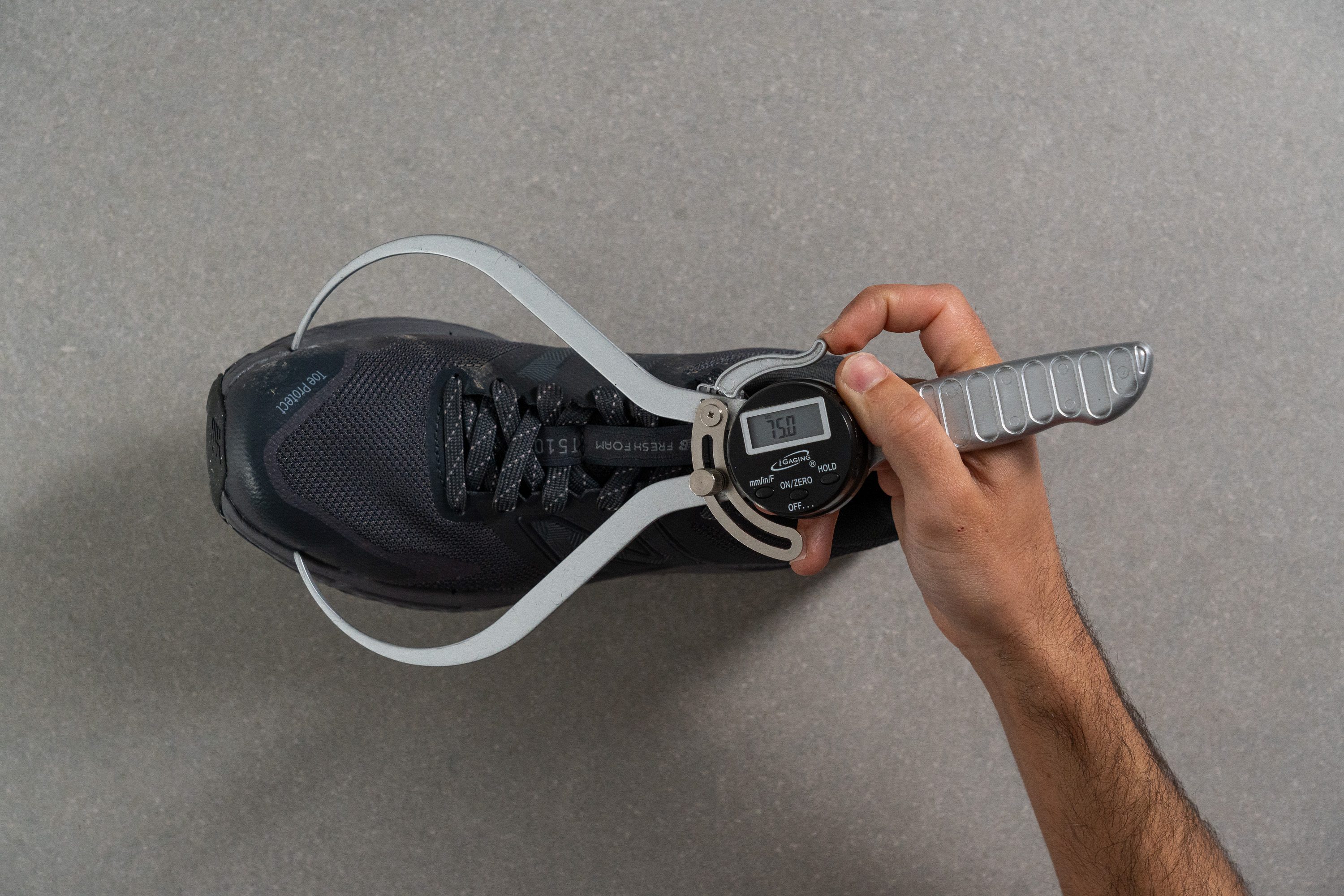
This test follows an older methodology, which is why you don't see recently tested shoes in the chart. Results from different methodologies can not be compared.
| 510 v6 | 75.0 mm |
| Average | 79.3 mm |
Traction / Grip
Lug depth
Using our calliper, we measured the 510 v6's lugs to be 2.9 mm thick which is just shy of our current lab average.
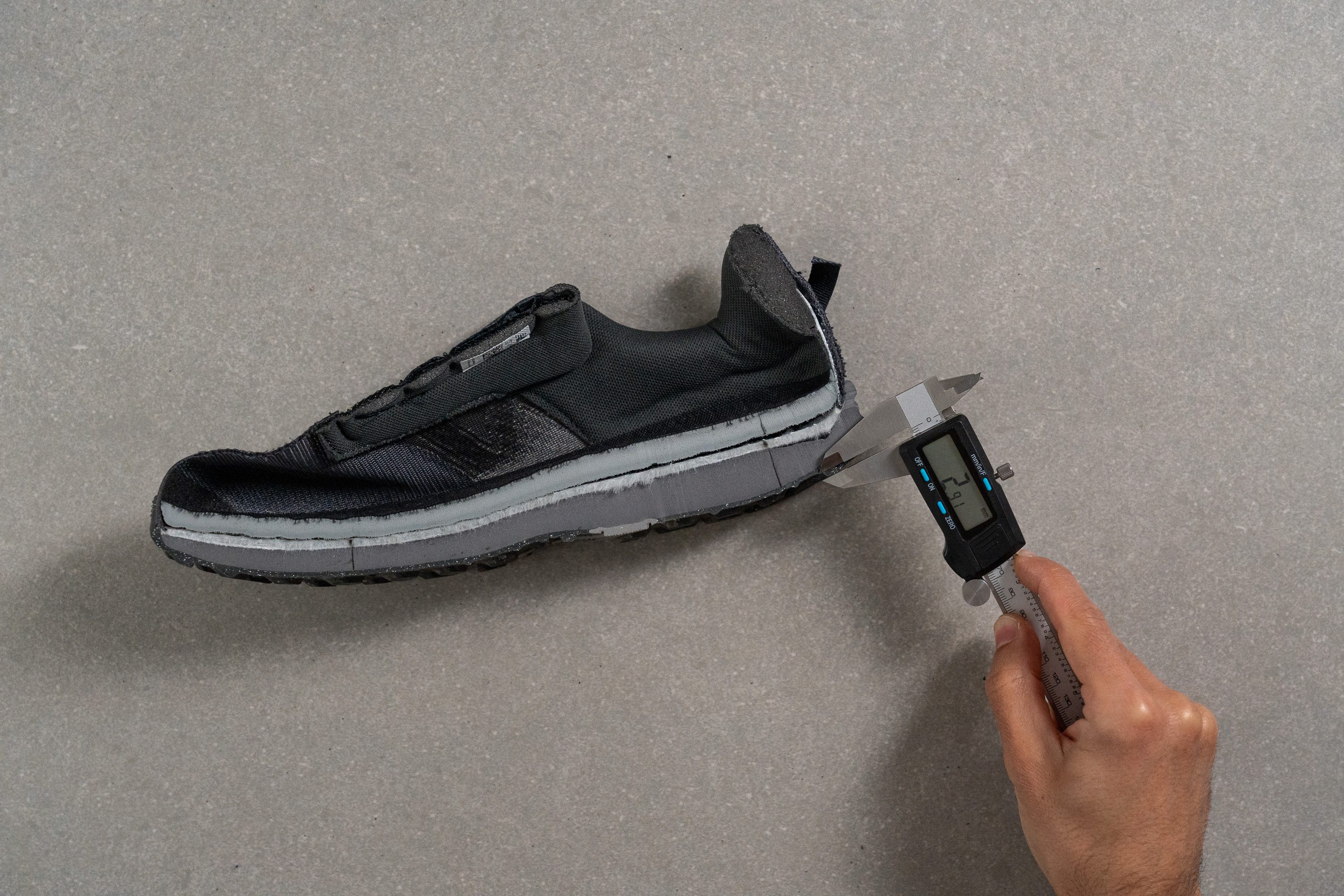
Not only do these feel nice and grippy on milder trails and dirt tracks, but their rounded edges and subtle configuration give the shoe a smooth ride when running on asphalt too.
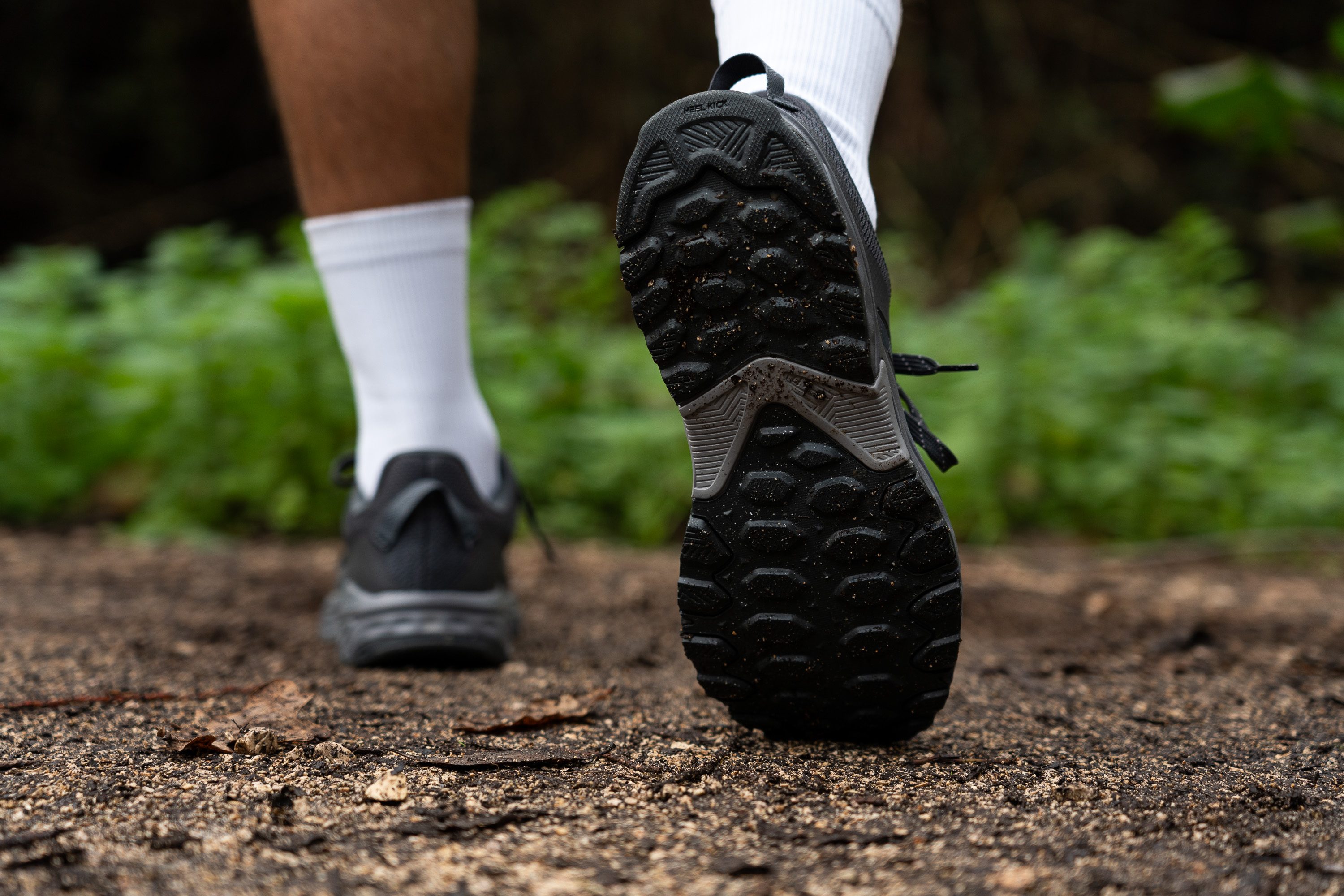
| 510 v6 | 2.9 mm |
| Average | 3.5 mm |
Flexibility / Stiffness
After securing the 510 v6 to our workbench, we found that 23.6N of force is required to bend it to 90 degrees.
This is more flexible than average and means that the shoe doesn't put up much resistance to the natural flexion of our foot. As such, the 510 v6 is great as a daily trainer as it leaves our feet feeling nice and fresh at the end of our less intense running or walking sessions.
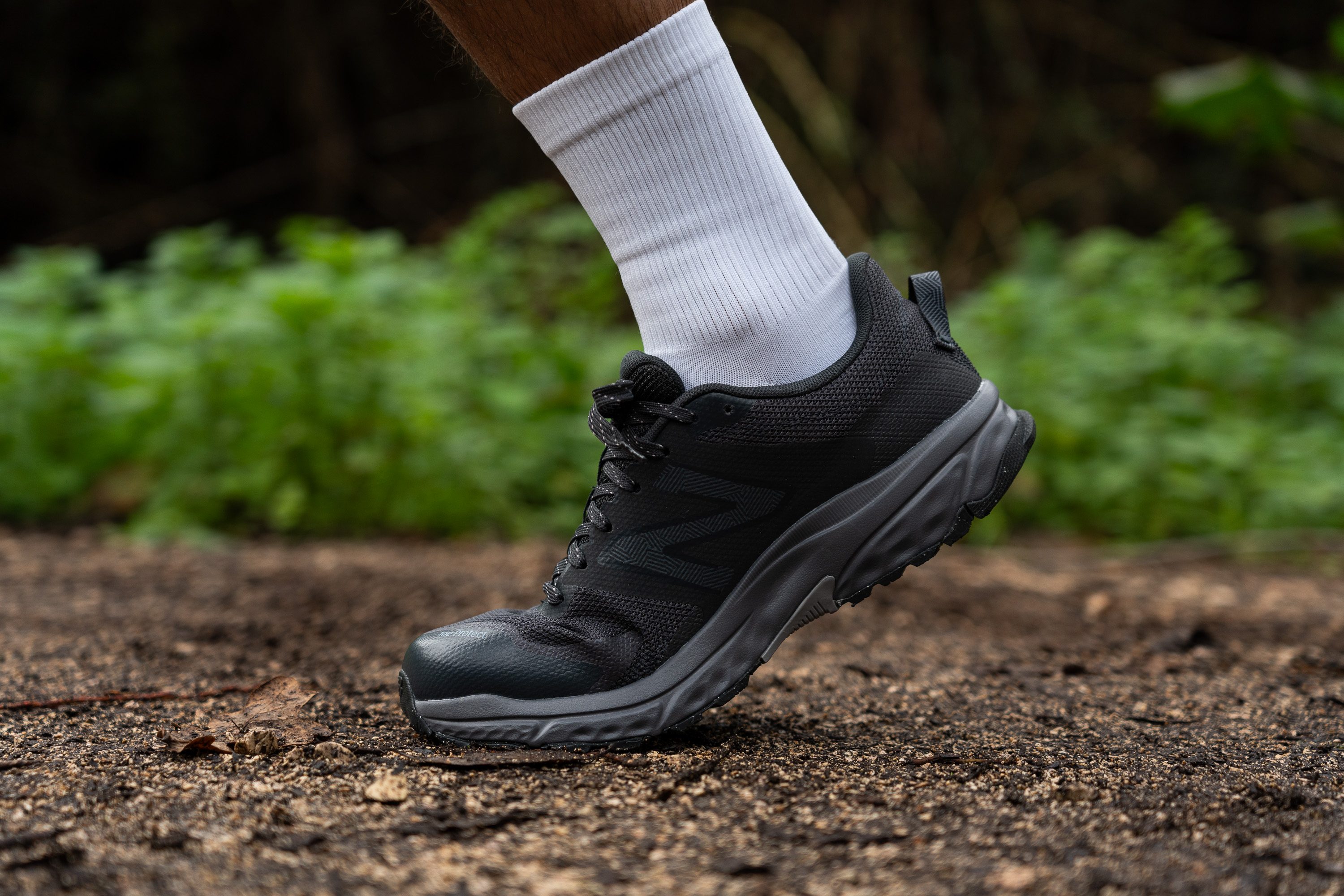
This test follows an older methodology, which is why you don't see recently tested shoes in the chart. Results from different methodologies can not be compared.
| 510 v6 | 23.6N |
| Average | 27.1N |
Stiffness in cold (%)
We also repeated the flex test after leaving the shoe in our freezer for twenty minutes and found that, like the midsole, the 510 v6's flexibility isn't very affected by the cold. Becoming only 14.4% stiffer in the cold means that the 510 v6 will feel quite consistent no matter how cold it gets. While these freezer results imply that the shoe makes a good wintertime trainer, we recommend pairing it with a warm pair of socks to avoid cold feet thanks to the many air vents in the upper.
| 510 v6 | 14% |
| Average | 32% |
Weight
Tipping the scale at 11 oz (312g), the 510 v6 is slightly heavier than the average trail shoe. That said, the shoe doesn't feel too bulky underfoot even when testing it on trails with lots of uphill scrambles.
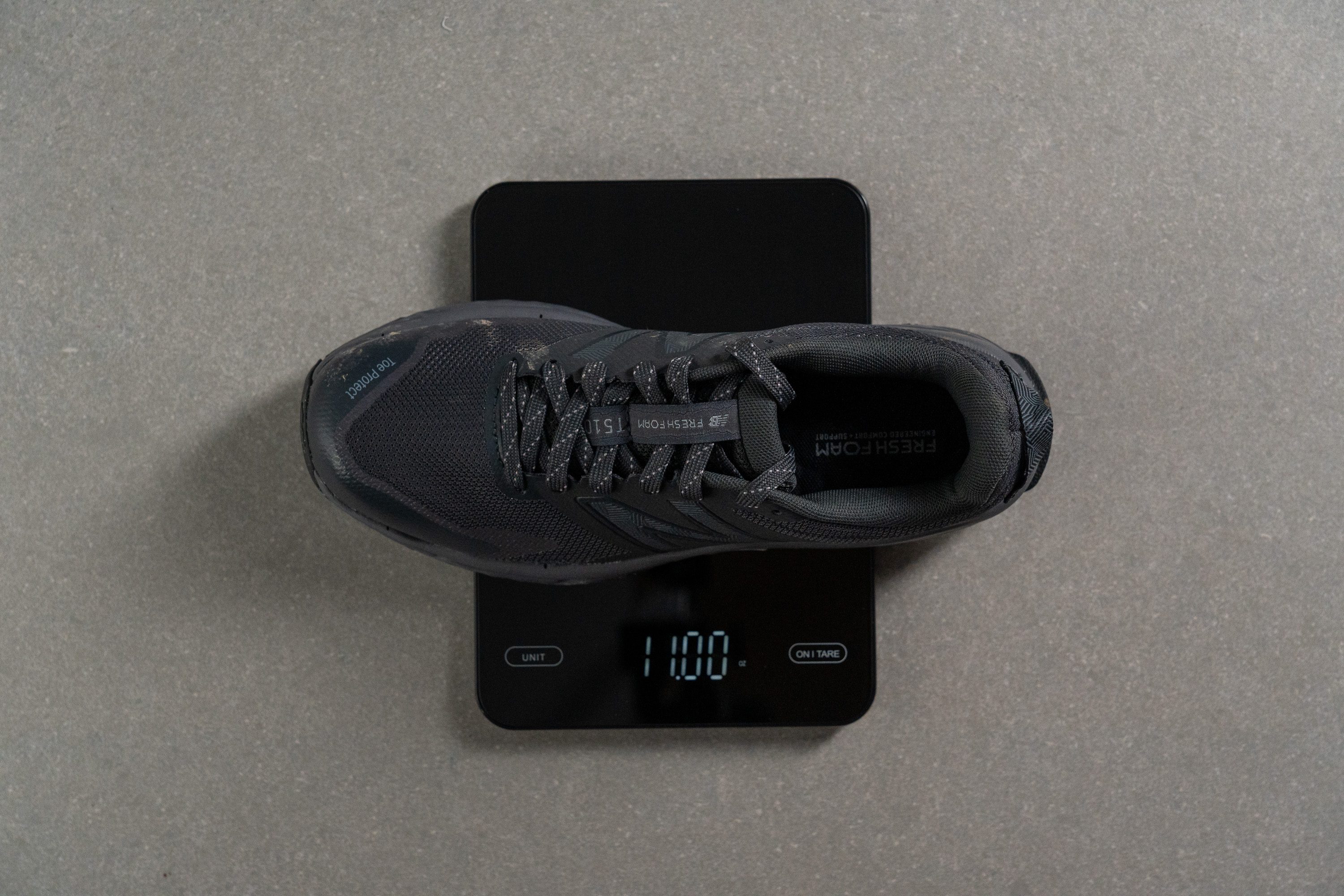
| 510 v6 | 11.0 oz (312g) |
| Average | 10.2 oz (289g) |
Breathability
As we can clearly see from the footage from our smoke test, the 510 v6 allows the smoke to filter through the upper quite quickly and evenly. This performance earns the 510 v6 a breathability score of 4 out of 5, making it a great warm-weather companion.
Looking at a backlit cross-section of the upper, it's easy to identify the source of the shoe's airflow. The light shines brightly through the massive pores that dot the mesh at the toebox, with only the chunky tongue and the overlay at the lateral side of the shoe blocking out the light in any meaningful way.
Using our microscope to inspect the mesh itself, we can see that it is woven with lots of gaps between the braids which open up to form a pattern of perforations that act as little chimneys for heat to escape the shoe.

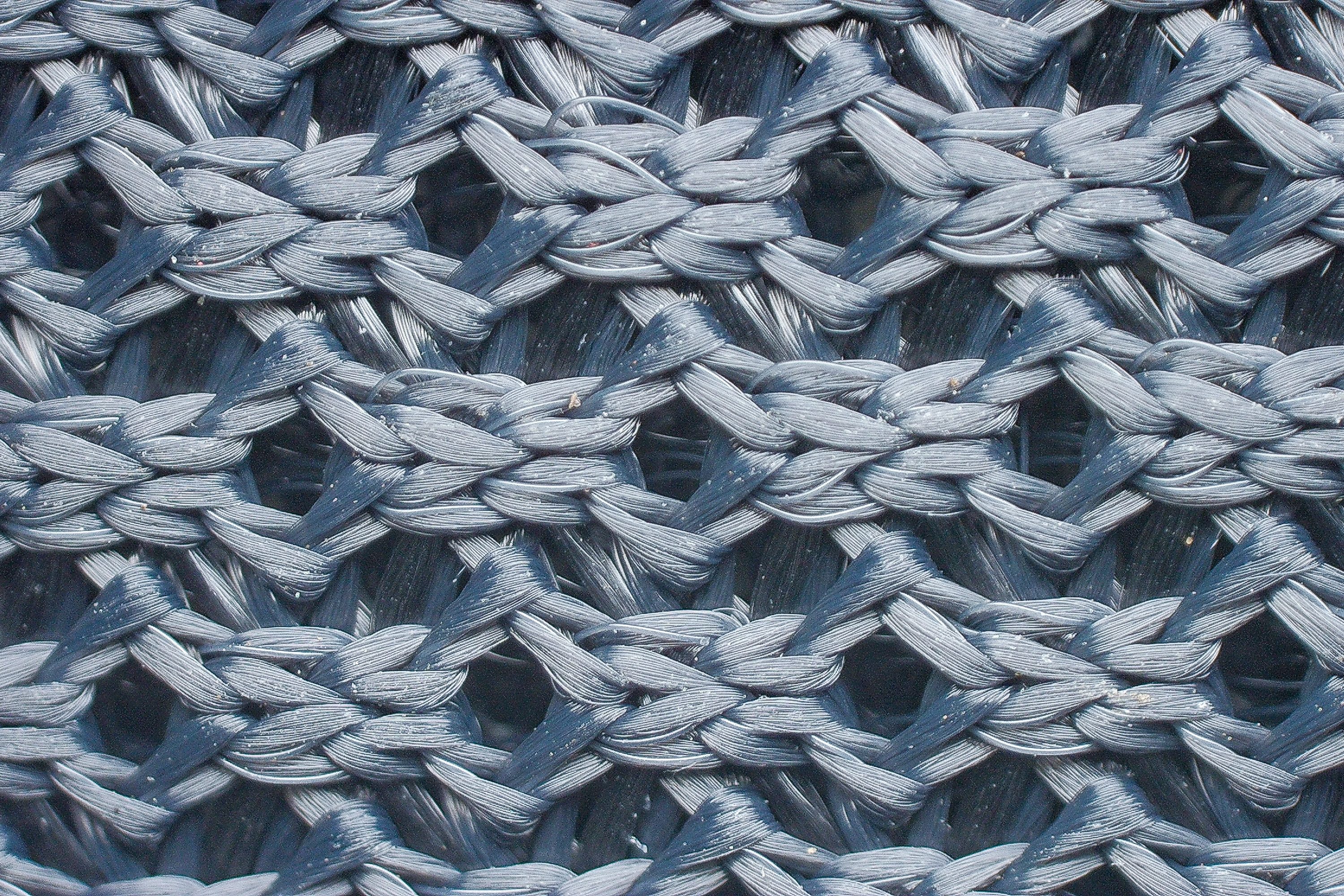
| 510 v6 | 4 |
| Average | 3.2 |
Stability
Lateral stability test
Thanks to its relatively dense stack and broad forefoot, the 510 v6 feels quite well-planted as we shift our weight around in the shoe. That said, however, as a neutral shoe it does little to mitigate the lateral movements of our foot. This makes it a less-than-ideal choice for runners with pronounced overpronation, for whom we recommend a stability shoe like the ASICS GT 100 12 instead.
Torsional rigidity
There's a 3D molded midsert embedded under the arch that lends the shoe a moderate level of torsional rigidity that we scored 3 out of 5 in our manual assessment. This factors into the shoe's comfortable ride as it is able to conform with the natural movements of our foot while still providing us with a reasonably level landing platform.
| 510 v6 | 3 |
| Average | 3.6 |
Heel counter stiffness
The heel counter is also moderately stiff, earning another score of 3 out of 5 on our subjective scale.
As we can see, the bulk of the shoe's rearfoot structure comes thanks to the extremely generous amount of padding afforded at the heel. This means that we enjoyed an extremely plush and forgiving rearfoot lockdown that didn't restrict the movement of our heel during our test runs.
| 510 v6 | 3 |
| Average | 3 |
Midsole width - forefoot
Using our caliper, we measured the 510 v6's midsole to be 113.5 mm wide at the forefoot. This is only slightly wider than our current lab average and gives us more than enough of a base for surefooted landings without adding too much weight to the shoe.

| 510 v6 | 113.5 mm |
| Average | 112.8 mm |
Midsole width - heel
The 510 v6's midsole isn't quite as robust as average at the heel, measuring only 85.9 mm wide according to our calliper. This didn't pose any issue during our test runs, however, heel strikers more accustomed to having a wider landing platform should consider the Brooks Divide 4 instead.
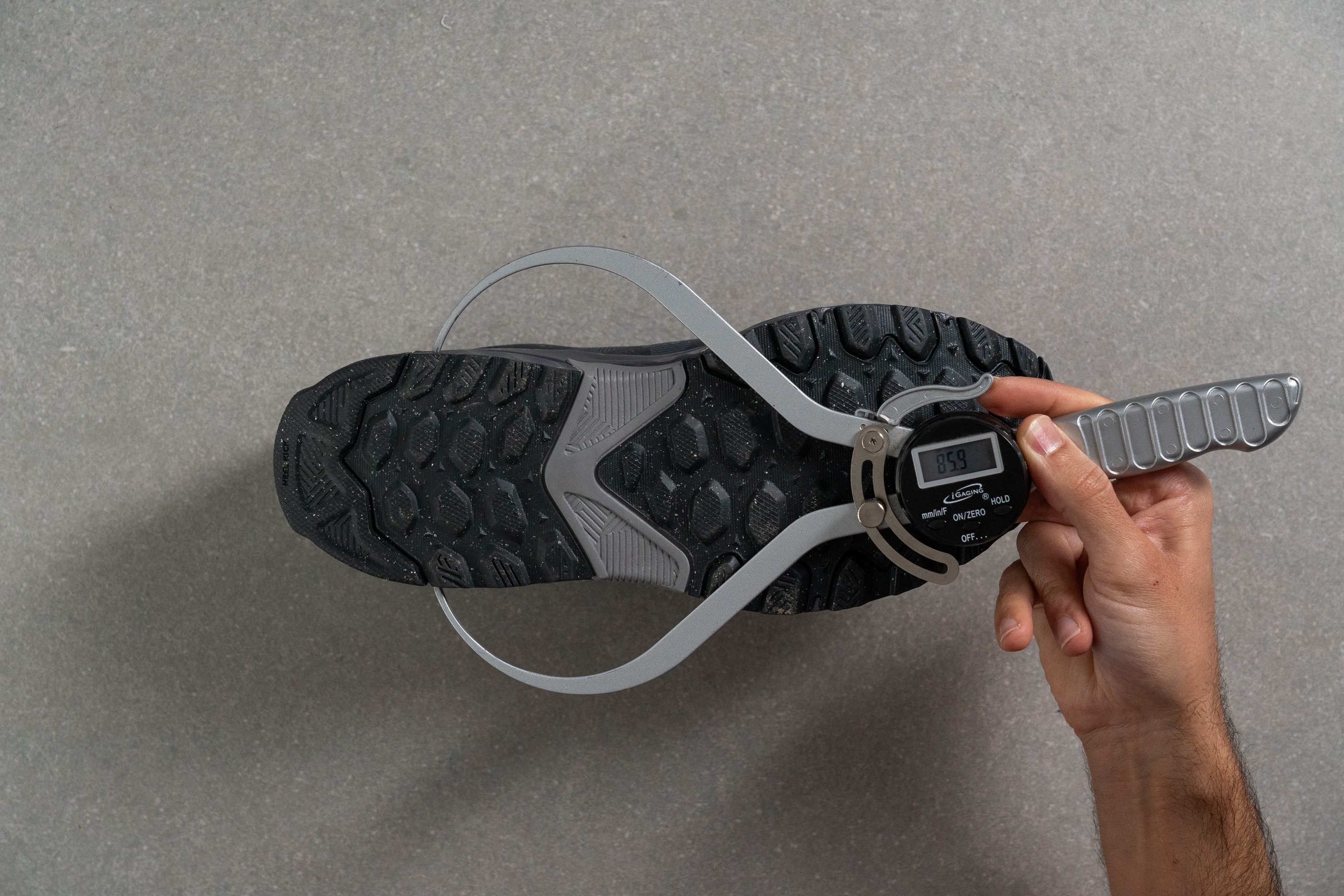
| 510 v6 | 85.9 mm |
| Average | 89.8 mm |
Durability
Toebox durability
To simulate extreme wear and tear, we set our Dremel against an unreinforced portion of the toebox mesh with 3.2N of force.
After four seconds of grinding, our tool wasn't able to tear clean through the sturdy mesh. This earns the 510 v6 a very respectable toebox durability score of 3 out of 5. As such, especially with the added "toe-protect" feature, we can tackle the trails confident that a few bumps or scrapes won't compromise the integrity of the toebox.
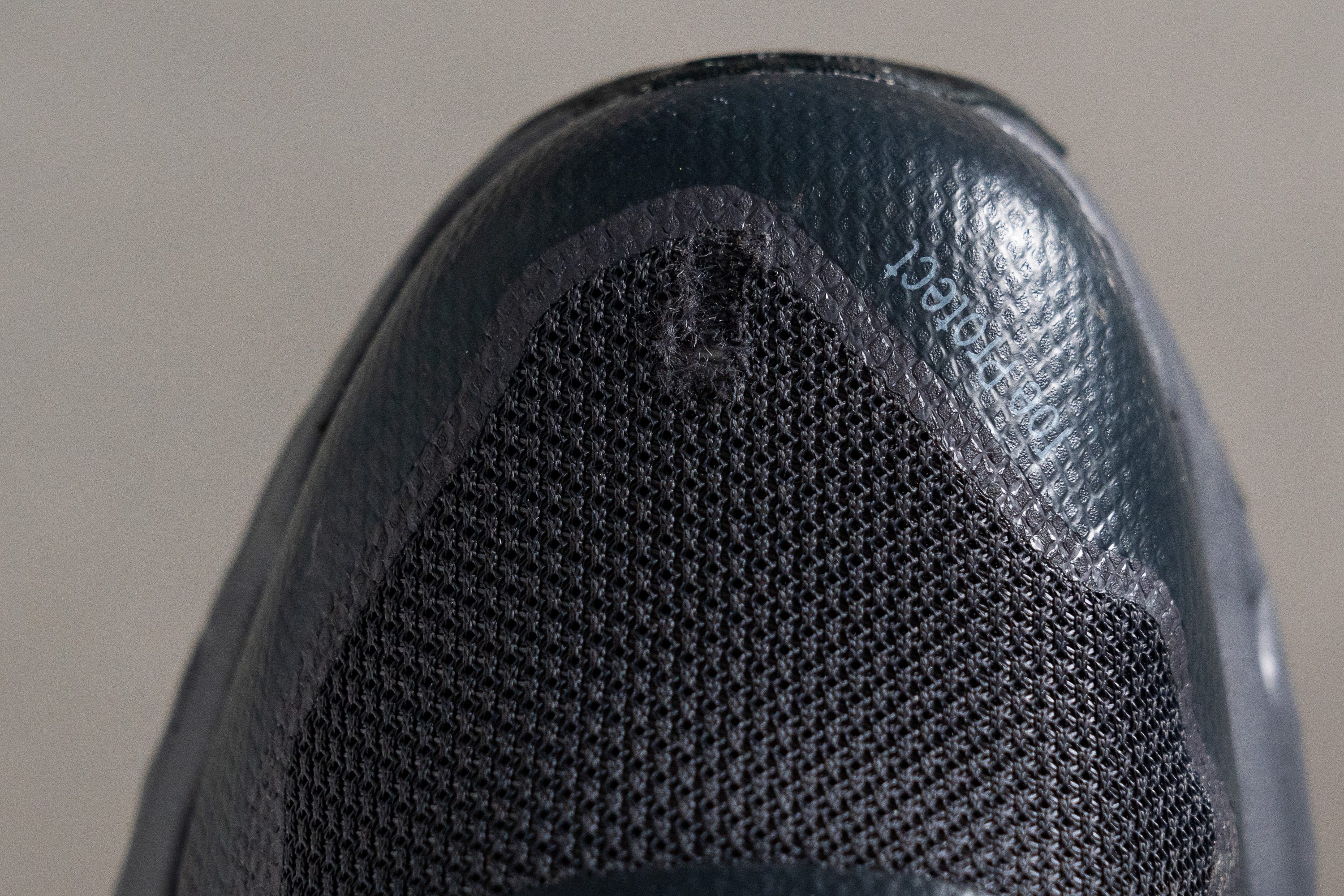
| 510 v6 | 3 |
| Average | 3.1 |
Heel padding durability
Next, we turn our attention to the shoe's generously padded heel collar and put our Dremel to work once more.
This proved to be much more devastating once we pulled our tool away and found that it had eaten away at a significant chunk of the pillowy heel padding, leading us to give it a durability score of only 1 out of 5. This means that the shoe is quite vulnerable to friction from heel rubbing, so we don't recommend going for too many sockless runs in this shoe.

| 510 v6 | 1 |
| Average | 3 |
Outsole hardness
Pressing our durometer against the outsole rubber wields a reading of 84.1 HC which is about as hard as average. This usually denotes a good mix of grip and durability as we've come to find in the lab.
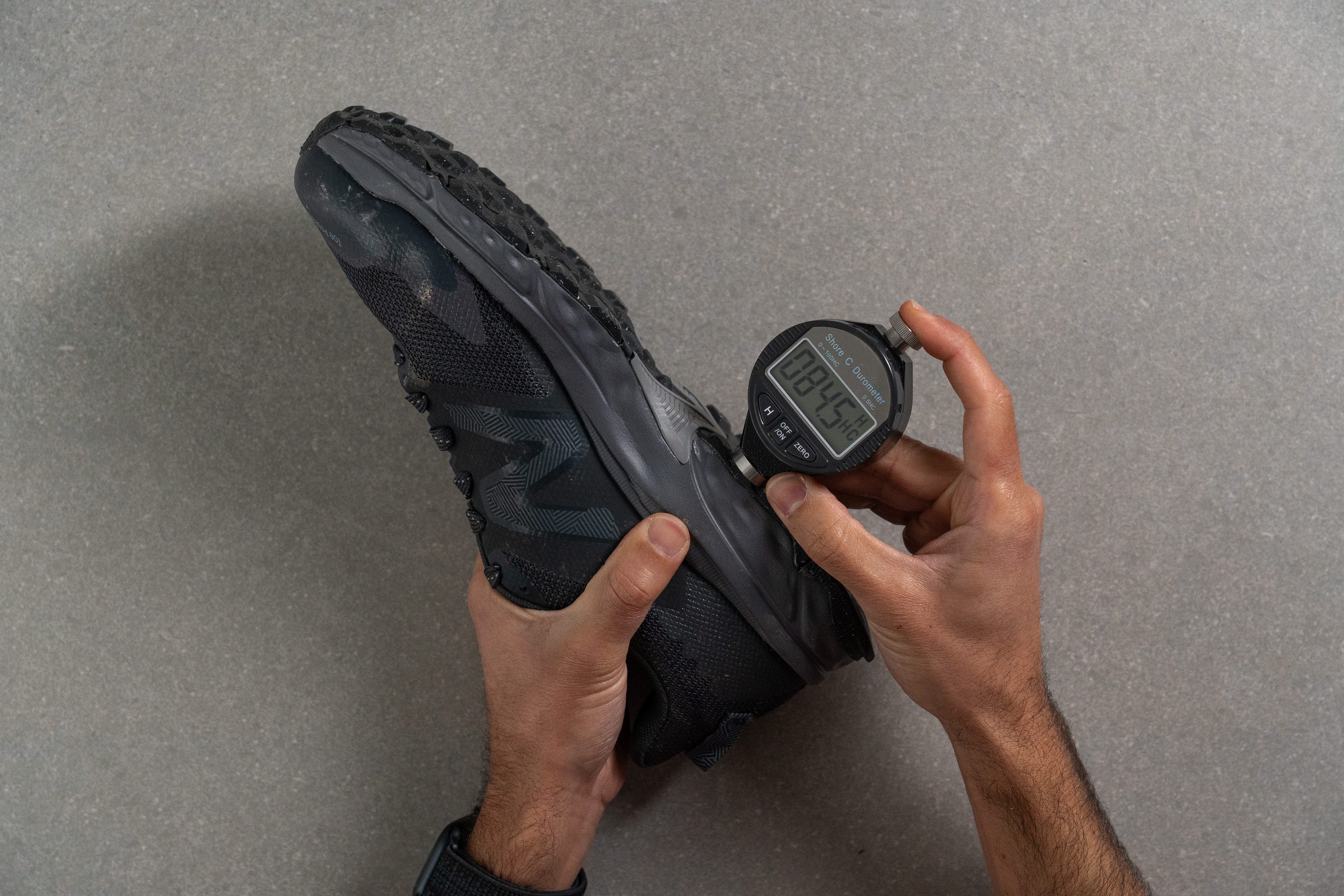
| 510 v6 | 84.1 HC |
| Average | 85.8 HC |
Outsole durability
To test that last claim, we fired up our Dremel once more, this time at 10K RPM, and set it against one of the outsole lugs for twenty-two seconds of abrasion.
Once the test was up, we used a tyre tread gauge and found that we had shorn away 0.8 mm of material from the outsole. This is similar to how much most trail shoes we've tested lose in this same test, making the 510 v6's outsole about as durable as average. We therefore expect this shoe to last the expected 400 - 500 mile shelf life.
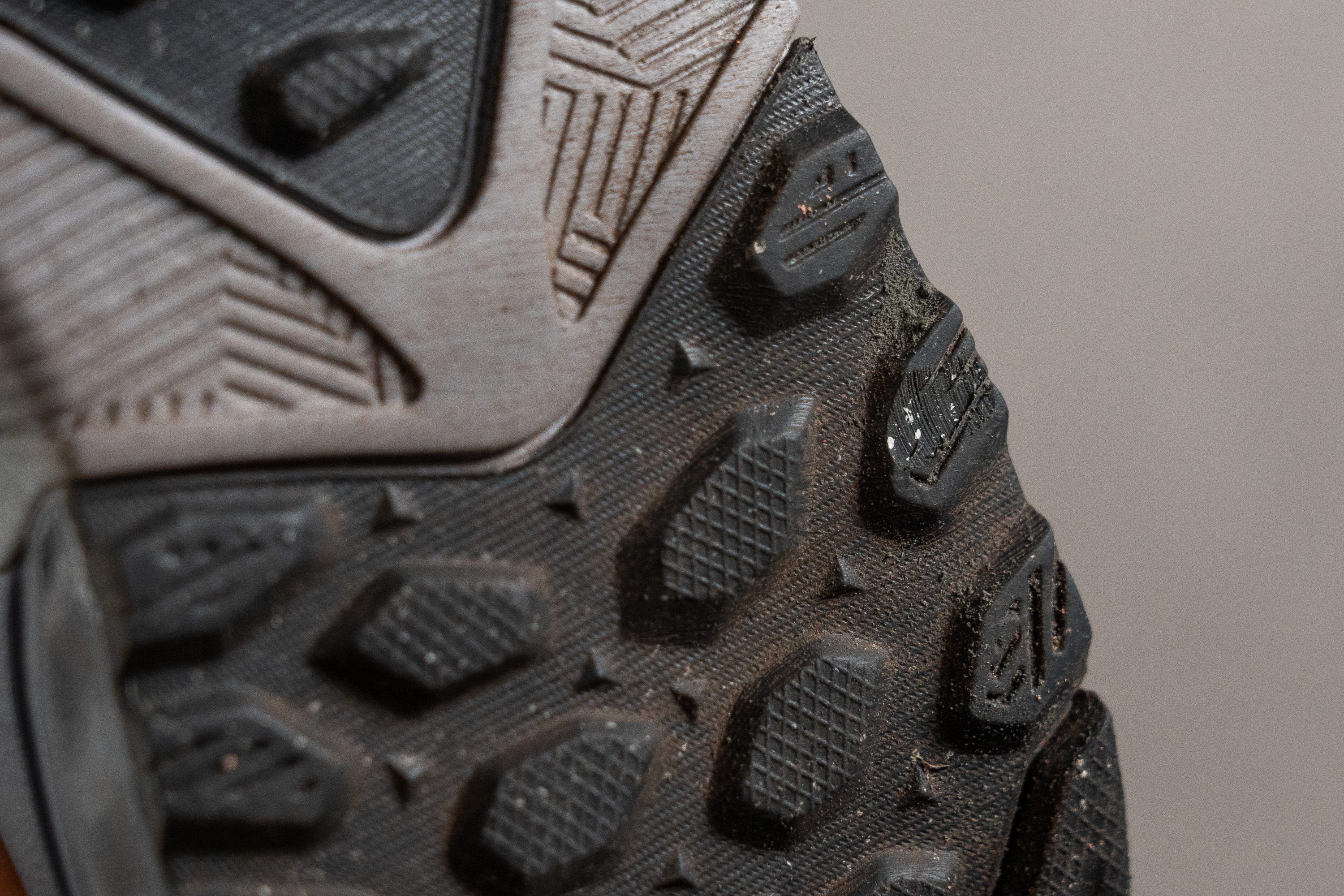
| 510 v6 | 0.8 mm |
| Average | 0.9 mm |
Outsole thickness
The outsole is just shy of our current lab average at only 2 mm thick according to our caliper measurements. Considering the lugs as well, this is a fair amount of rubber to wear through.
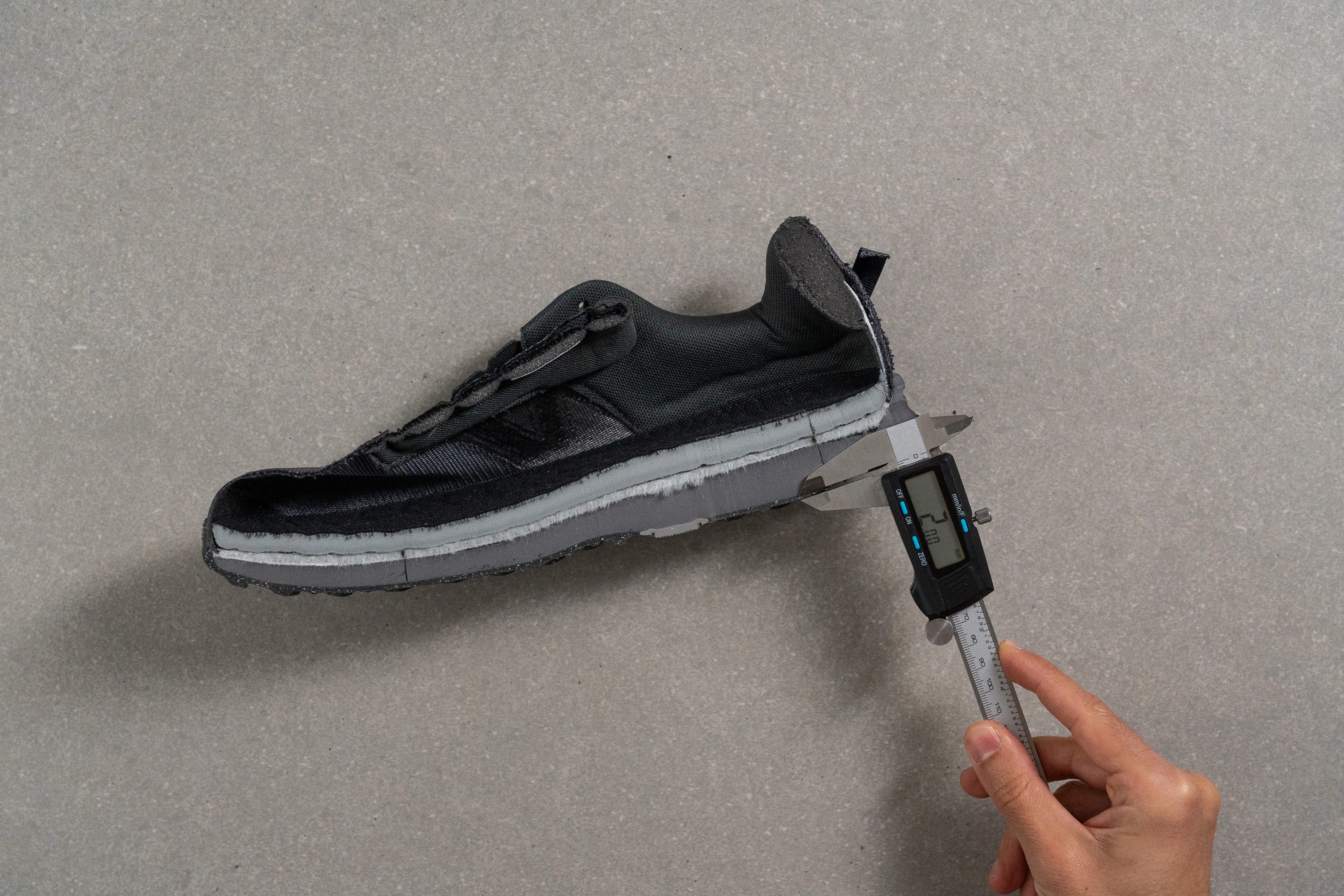
| 510 v6 | 2.0 mm |
| Average | 2.2 mm |
Misc
Insole thickness
While the shoe seems to fall in line with most of our lab averages, the 510 v6 boasts an extraordinarily beefy insole that we measured to be 9.8 mm thick. This substantial sockliner gives us an incredibly soft and cushy footbed to sink into and pampers our feet almost as much as the midsole cushion! It also sits quite comfortably under the arch of our foot for a comfy yet supportive sensation throughout our test runs.
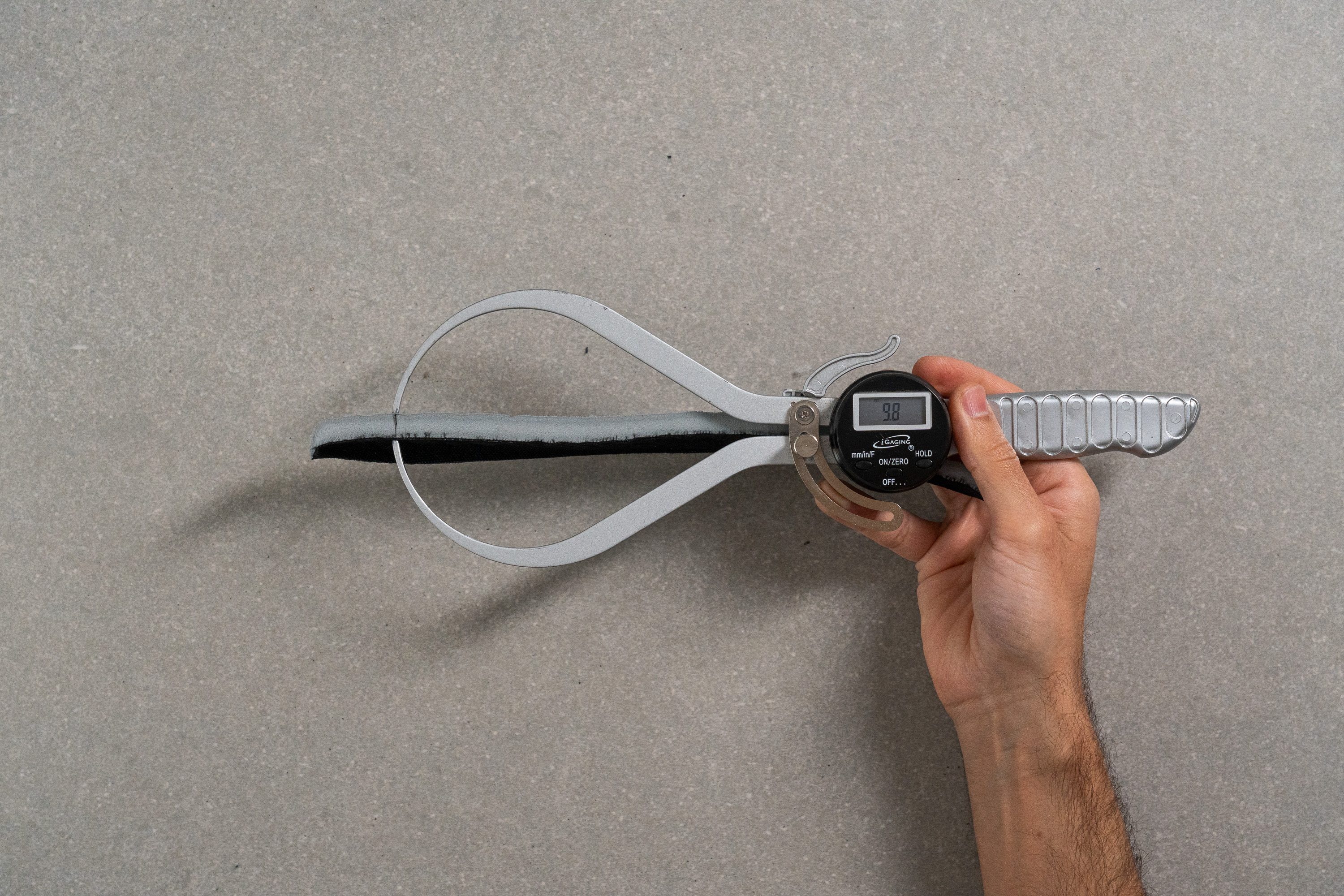
| 510 v6 | 9.8 mm |
| Average | 4.7 mm |
Removable insole
The 510 v6's insole isn't glued in, so replacing it with an aftermarket alternative or a custom orthotic is possible if necessary.
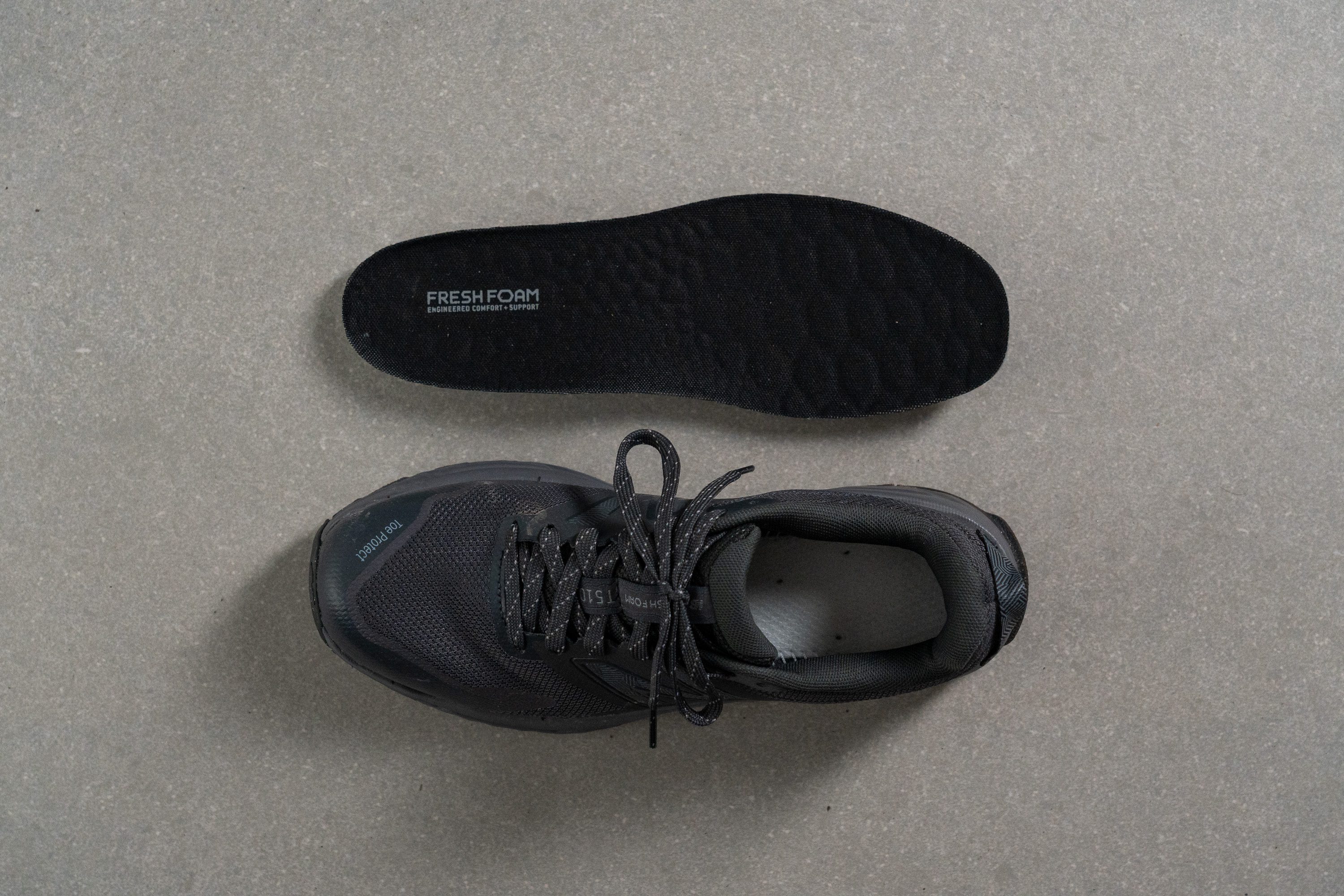
| 510 v6 | Yes |
This section is a work in progress
Midsole softness in cold (%)
We placed the 510 v6 in our freezer to simulate exposure to extreme cold conditions. After twenty minutes, we took another durometer reading of the midsole and found that it only became 19.8% firmer once chilled. This is a more consistent result than the average for a trail shoe and means that the 510 v6's cushioning shouldn't feel too different as the season change.
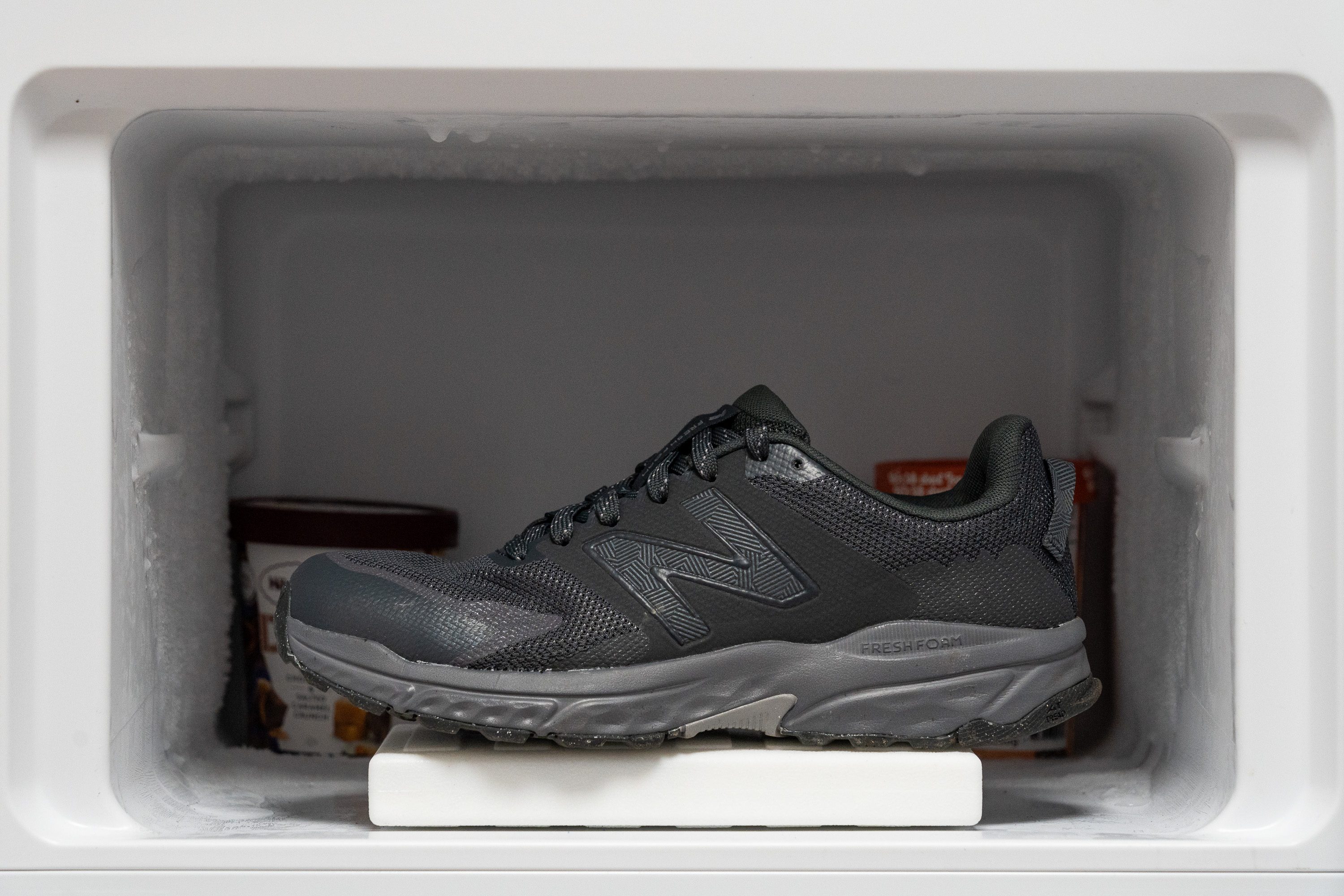
| 510 v6 | 20% |
| Average | 26% |
Reflective elements
With no reflective elements whatsoever to be found on the shoe, we recommend using additional high-vis gear if using the 510 v6 along dimly lit roads at night.
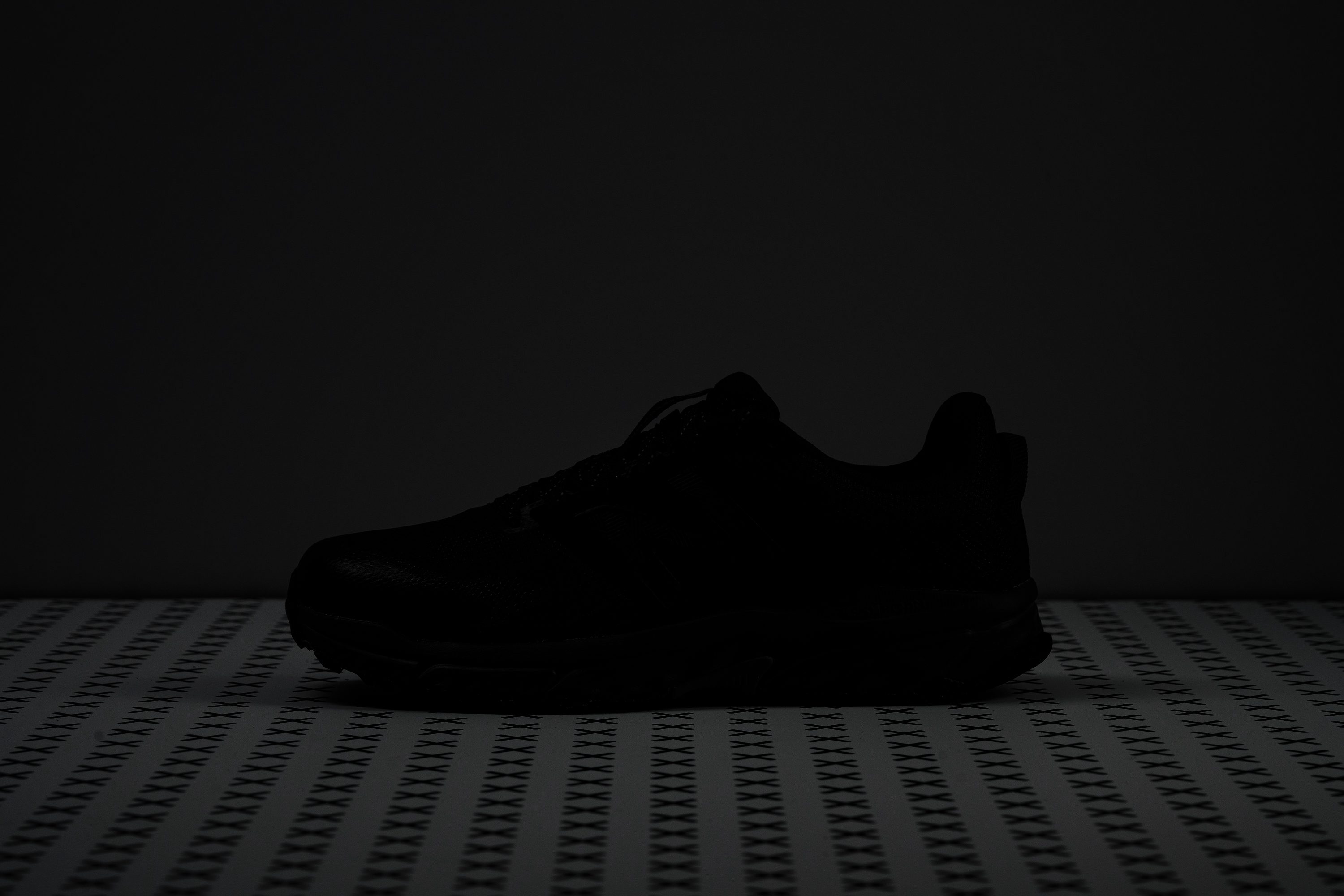
| 510 v6 | No |
Tongue padding
The 510 v6's tongue is a little more padded than the average trail shoe at 7.6 mm thick according to our caliper measurements. This helps us to achieve a secure midfoot lockdown that effectively nullifies the presence of the laces across our midstep without feeling too pillowy.
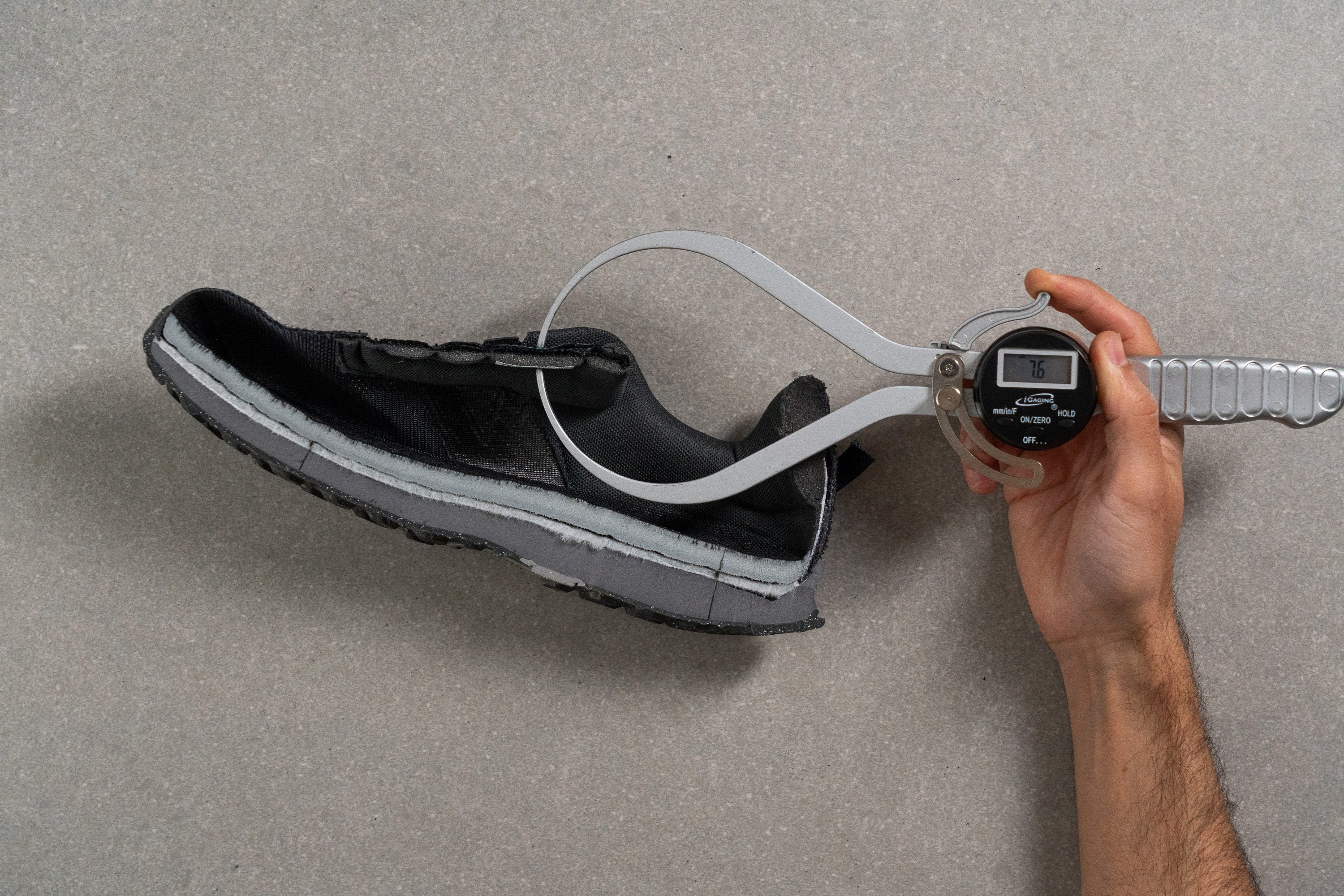
| 510 v6 | 7.6 mm |
| Average | 6.4 mm |
Tongue: gusset type
The 510 v6's tongue isn't gusseted, which is odd for a shoe that's meant to go off-road. Apart from mitigating tongue slippage as we twist and turn on the trails, a gusset also prevents little bits of grit or debris from making their way into the shoe and menacing our feet. While not a huge problem, we found ourselves missing this feature much more when testing the shoe on dusty, fine-graveled trails.
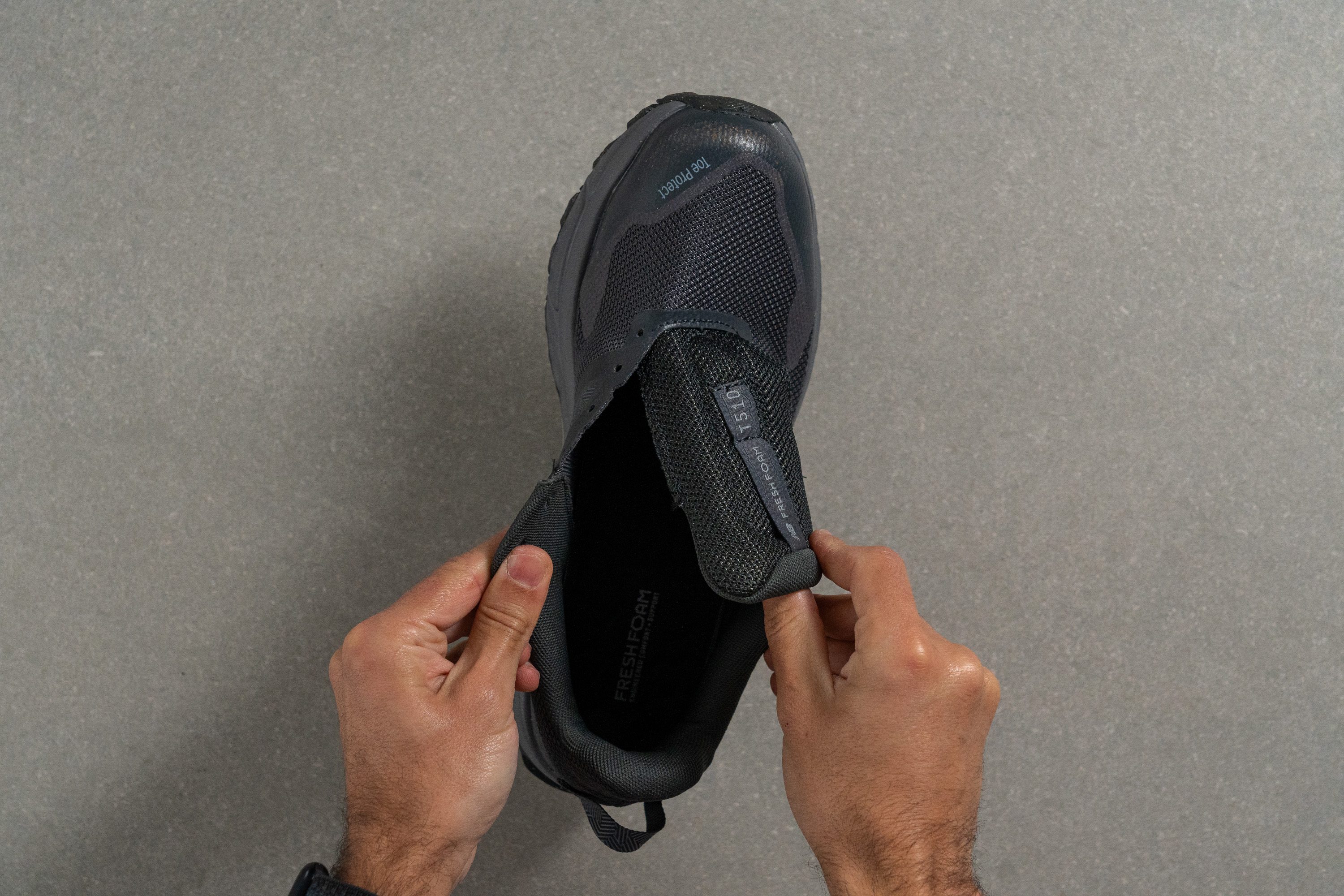
| 510 v6 | None |
Heel tab
There's a handy little finger loop attached to the 510 v6's heel that makes it a little easier to slide on.
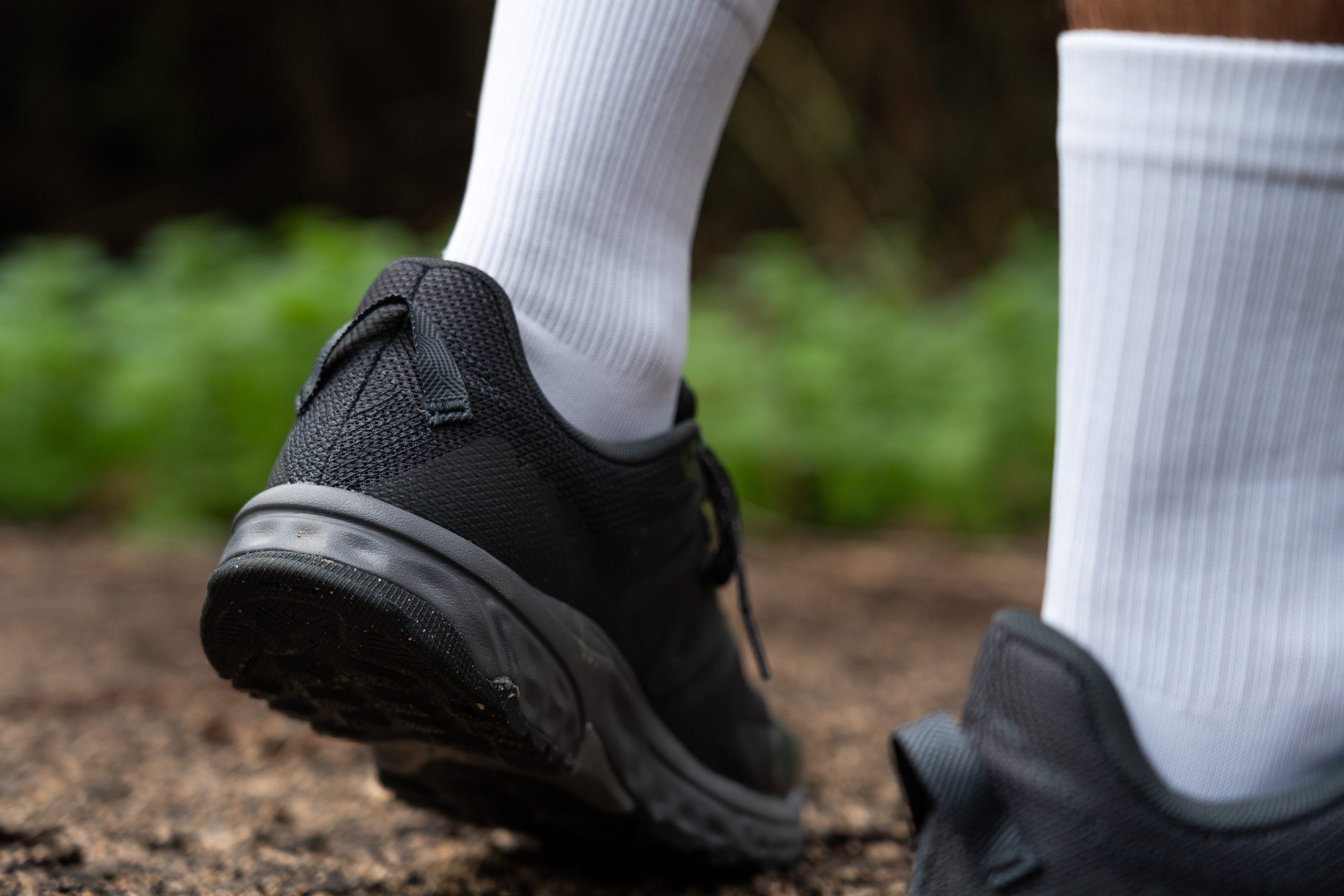
| 510 v6 | Finger loop |

